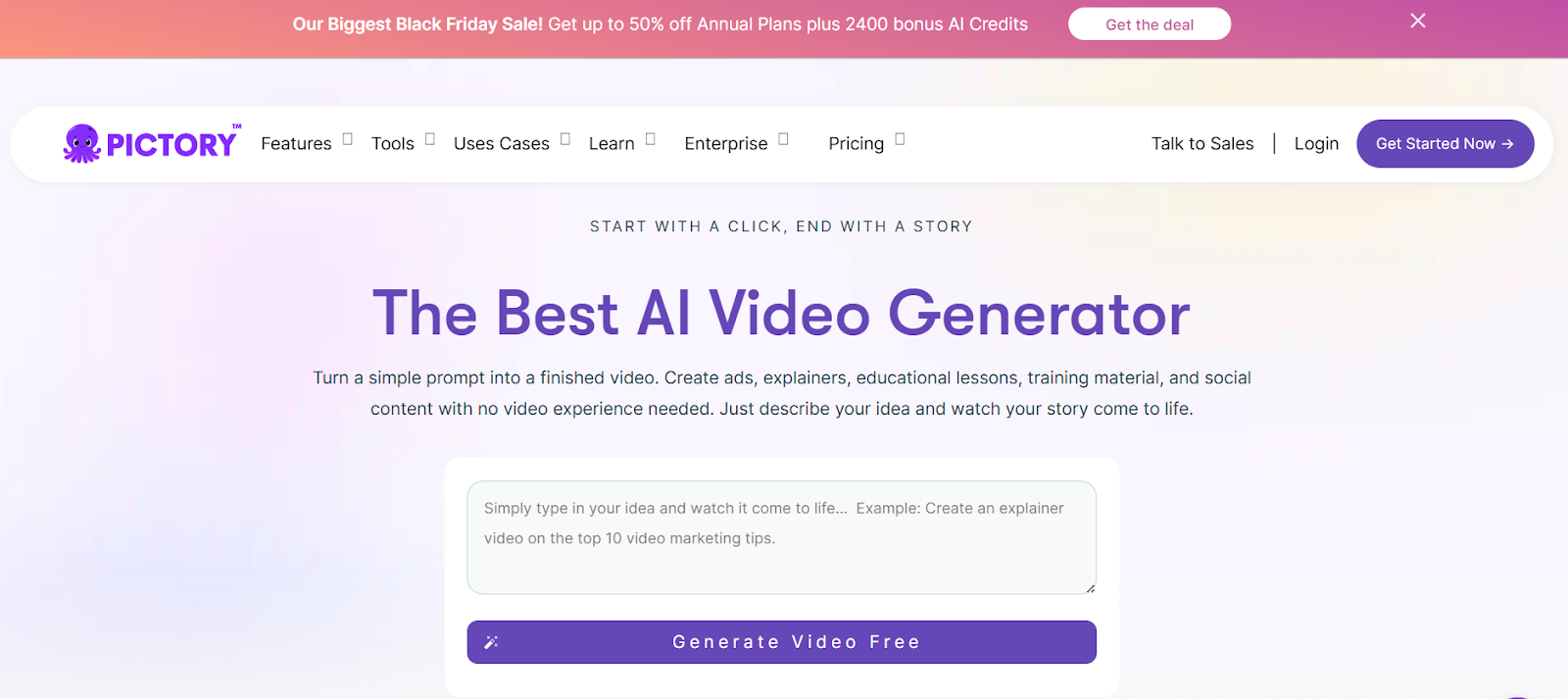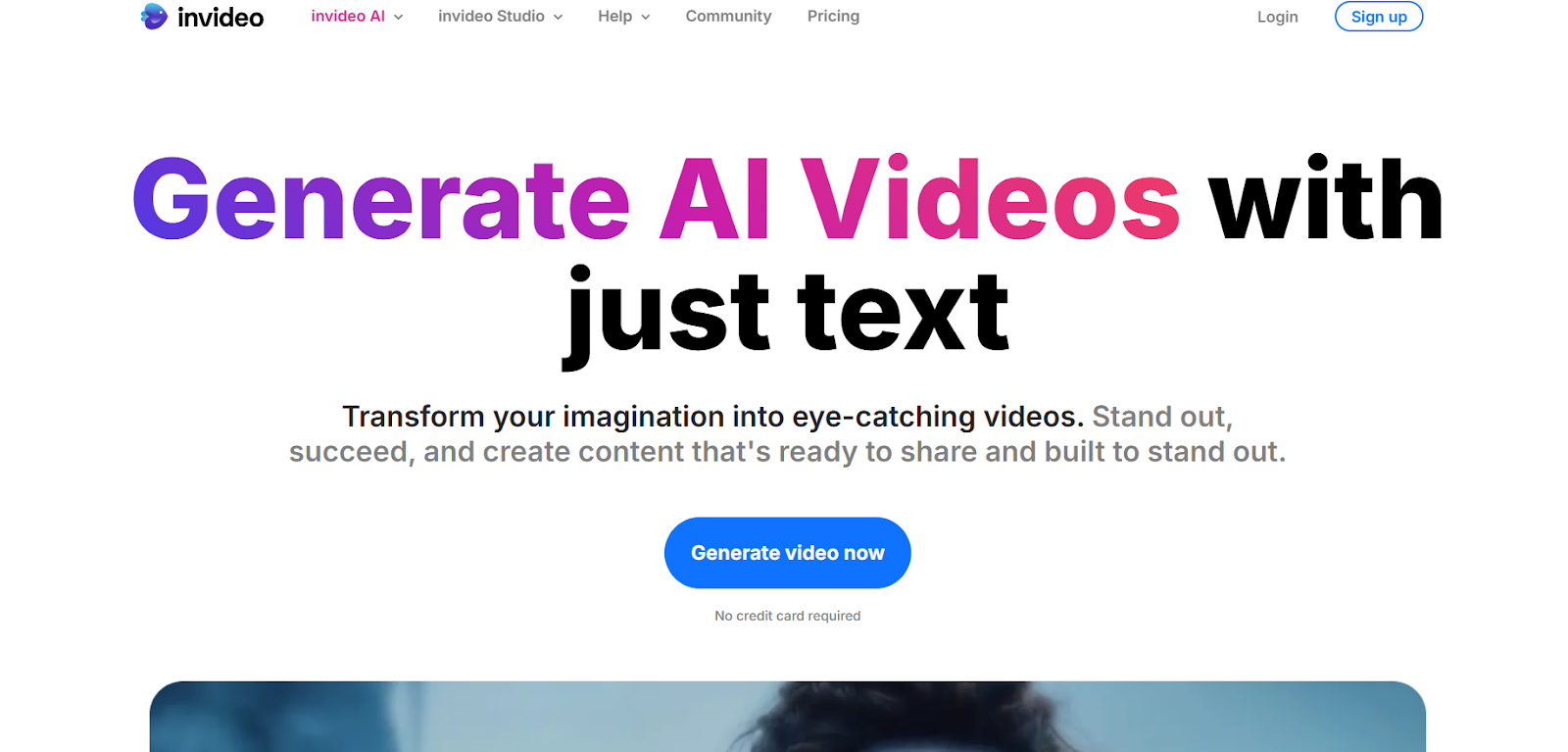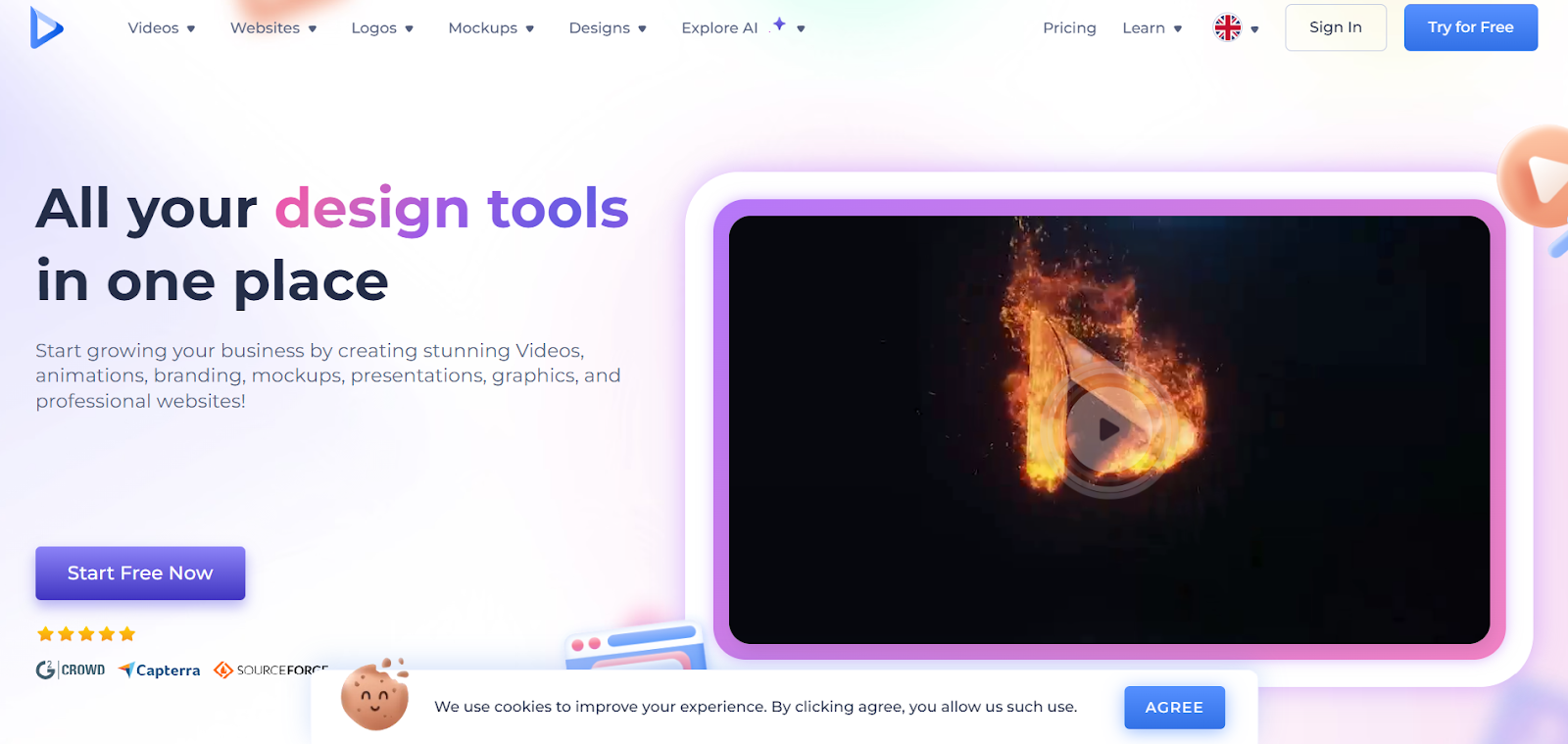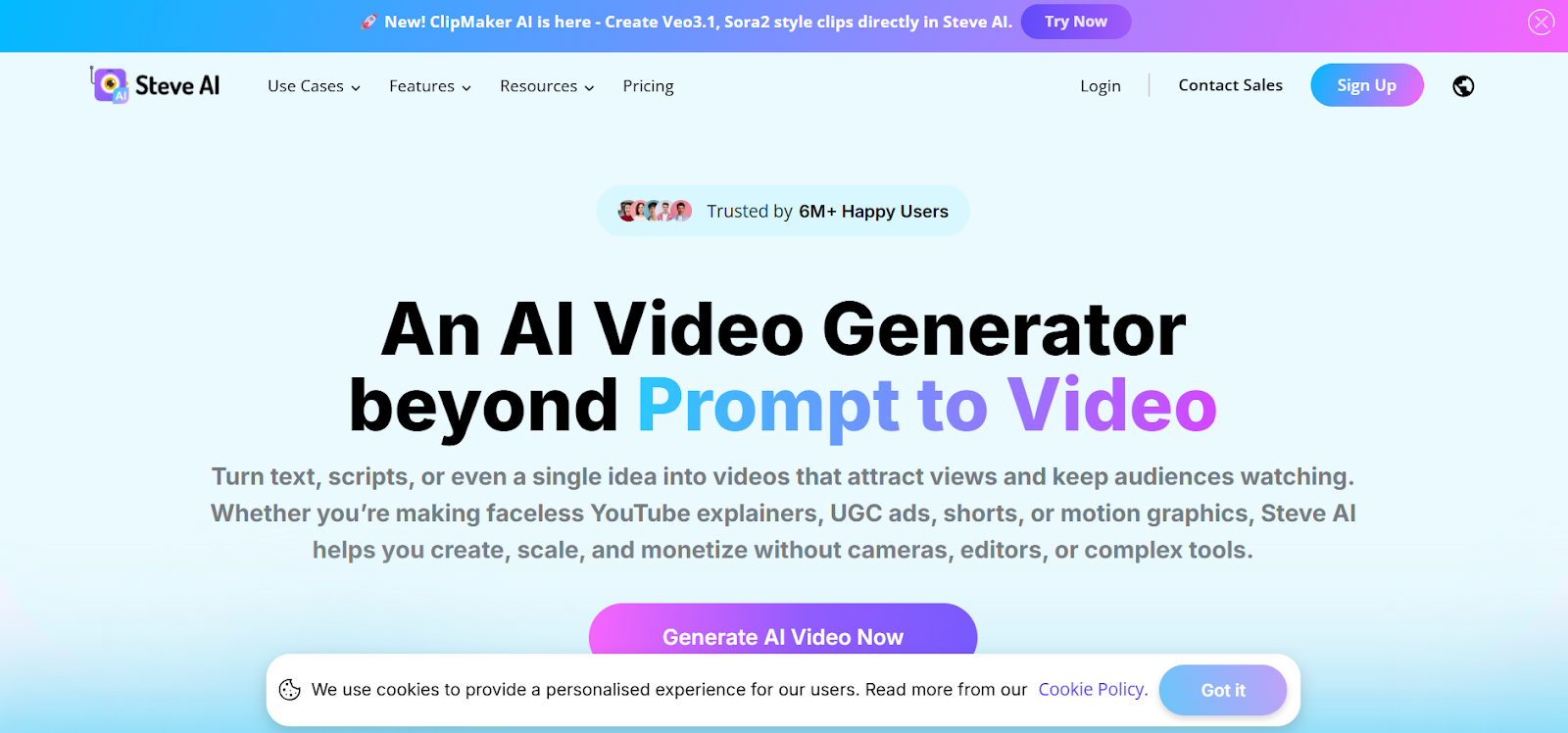12 Image-to-Video AI Tools Every Growth Team Will Use in 2026

Image-to-video AI has become one of the most useful creative technologies in 2026. It turns static images into scroll-stopping videos for Meta, TikTok, Instagram Reels, YouTube Shorts, Pinterest, and Google PMAX. Growth teams that rely on video-first creative outperform static-only brands by a wide margin: videos drive higher attention, better click-through rates, and stronger conversion lift.
The real advantage is speed. Leading performance marketers now produce 15 to 50 videos per week. Most winning ads come from rapid creative iteration, not a single perfect concept. Image-to-video AI makes that possible by automating motion, animation, sequencing, and platform-ready formatting in under 60 seconds.
Within this landscape, Quickads.ai has emerged as one of the most complete systems. Quickads is the world’s only full-stack, award-winning, simple-to-use ads operating system that tells you what ads to make, why those ads work, and helps you create them instantly. Its image-to-video engine combines creative automation with real data signals, making it especially useful for growth teams focused on performance, testing, and scale.
This guide covers the 12 best image-to-video AI tools growth teams will rely on throughout 2026.
Table of Contents
- What image-to-video AI really means
- Why image-to-video AI matters in 2026
- How we selected these tools
- The 12 best image-to-video AI tools
- Why Quickads.ai is uniquely built for scale
- How to evaluate image-to-video AI tools
- FAQs
- Author Box
What Image-to-Video AI Really Means
Image-to-video AI takes a static image and transforms it into a motion-driven video. Not a slideshow, actual movement based on depth mapping, model inference, and cinematic sequencing.
What the AI “understands”:
- The subject and background
- Where motion should enter
- Which elements should animate
- How transitions should look
- How to apply platform formats (9:16, 1:1, 16:9)
The result:
A dynamic, polished short-form video that mimics the work of an editor and motion designer, no After Effects, no templates, no production bottlenecks.
This capability becomes even more valuable when you combine it with broader AI workflow strategies. Growth teams exploring creative automation often start with resources like 12 Best AI Marketing Tools for Small Business 2025, which highlight how interconnected modern AI workflows have become.
Why Image-to-Video AI Matters in 2026
Several global shifts are driving the adoption of image-to-video AI:
1. Video dominates attention
Across platforms:
• Video makes up more than 82 percent of all internet traffic
• Reels and TikTok outperform static creatives by 30 to 80 percent
• YouTube Shorts crossed 70 billion daily views
• PMAX favors motion over static assets
Platforms reward motion, and AI helps teams create it quickly.
2. Creative velocity wins performance
Brands creating more videos find more winning ads. Research shows:
• Producing 10–20 videos weekly outperforms brands producing fewer than 5
• Iteration beats intuition
• Winner-finding requires high-volume creative testing
Internal link cue: “creative iteration cycles” (link → Mastering Performance Creative)
3. Production resources are limited
Hiring editors, animators, and designers is expensive. Short-form demands speed. AI replaces repetitive, low-value production tasks and gives teams more output without adding headcount.
4. Platform complexity is only increasing
Each platform has its own rules:
• TikTok needs raw, fast cuts
• Meta needs polished brand-safe edits
• YouTube Shorts needs rhythmic pacing
• PMAX needs asset variety
Image-to-video AI tools automate formatted outputs for each channel.
How We Selected These Tools / What to Look For
We evaluated 40+ platforms across functionality, output quality, and overall usefulness for real marketing workflows.
The evaluation criteria included:
1. Motion realism:
Does the animation feel believable? Some systems distort faces or objects, these were excluded.
2. Ease of use for non-designers:
If a tool required professional editing skills, it didn’t make the list.
3. Templates and branding:
Support for captions, product cards, brand colors, CTAs, and platform-specific formats.
4. Speed + batch production:
Top tools generated videos under 60–90 seconds and supported multiple variations.
5. Consistency + accuracy:
We checked if the generated videos reflected the original image accurately.
6. Pricing fairness:
Transparent pricing and accessibility for small teams.
7. Creative intelligence:
Features that recommend what video type to create, not just how to create it.
8. Reputation:
Industry trust, review consistency, and the quality of recent updates.
The 12 Best Image-to-Video AI Generators in 2026
1. Quickads.ai

Quickads.ai is the most complete AI creative system on this list, because it’s not just an image-to-video generator but a full creative operating system. The platform combines AI generation, data-driven insights, and real-time creative intelligence to help brands build ads that actually convert, not just videos that look good.
Its image-to-video engine instantly turns static assets into vertical videos optimized for Meta, YouTube, TikTok, and Google Ads. But what sets Quickads apart is its predictive intelligence. The system analyzes millions of ads and identifies which creative patterns are statistically more likely to perform well for your category.
What makes it unique
• Proprietary creative intelligence that scores and suggests winning video styles
• Built-in ad inspiration library with 20M+ examples
• Automated variations for A/B testing
• Creative breakdowns explaining why certain videos work
• Platform-ready templates (Reels, Shorts, TikTok, PMAX)
• Batch creation for high-volume outputs
• Award-winning, simple-to-use interface
• 24×7 expert support with real marketers
• Backed by leaders from Google, Meta, and top D2C brands
Best for
Growth teams, media buyers, small businesses, D2C brands, and agencies focused on scaling performance through consistent creative output.
Internal links you can include:
• Quickads Feature Overview
• How Quickads Helps Performance Teams Scale
2. Pictory.ai

Pictory.ai specializes in converting long-form content, scripts, and images into short, polished videos. Its image-to-video module is accurate and widely used by marketers who want professional-looking results without timelines or keyframes.
Why it’s strong
• Large library of motion templates
• Auto-captions with high accuracy
• Fast rendering
• Good color grading and smoothing
• Easy control over pacing and transitions
Best for
YouTube creators, social media teams, and marketers who need consistent video output for both organic and paid channels.
3. InVideo AI

InVideo AI is well-known for simplicity. You upload images, write a small prompt, and the platform builds a fully assembled video, transitions, narrative flow, timing, and audio included.
Why it’s strong
• Superb prompt-to-video flow
• Very beginner-friendly
• Great for branded storytelling
• One-click platform resizing
• Clean templates for ads
Best for
Marketers new to video creation, YouTube Shorts creators, and businesses that need ready-to-post video ads quickly.
4. Synthesys AI

Synthesys AI specializes in presenter-style and spokesperson videos. It takes a portrait image and animates it into a human-like avatar that can deliver any script or message.
Why it’s strong
• Realistic facial animation
• Studio-quality voiceovers
• Professional backgrounds and setups
• Corporate-friendly template library
Best for
B2B teams, course creators, onboarding flows, training modules, and internal communication videos.
5. HeyGen

HeyGen is one of the best tools for creating ultra-realistic talking avatars. With a single portrait, it can generate an AI spokesperson with extremely natural lip-syncing and expressions.
Why it’s strong
• Hyper-realistic avatars
• Great for personalized outreach
• Native editing tools
• Template library for tutorials and announcements
Best for
Tutorials, personalized marketing messages, product walk-throughs, and customer success content.
6. Runway Gen-1 / Gen-2

Runway is the most advanced generative video tool for creators and studios. Its Gen-1 and Gen-2 models enable cinematic control, style transfer, and complex motion animation from a single image.
Why it’s strong
• High-end output quality
• Full control over style and motion
• Camera paths and depth manipulation
• Used in films, commercials, and generative art
Best for
Film studios, high-end creative agencies, advanced designers, and experimental creators.
7. Kaiber AI

Kaiber is known for artistic, stylized, and music-synced animations. It excels at turning images into visually expressive video loops that feel handcrafted.
Why it’s strong
• Strong music-video style effects
• Beautiful motion filters
• Artistic and abstract modifiers
• Good pacing control
Best for
Musicians, fashion brands, lifestyle creators, and any brand leaning into expressive visual identity.
8. D-ID Creative Reality Studio

D-ID focuses on facial animation and digital humans. It turns static photos into expressive presenters for training and marketing use cases.
Why it’s strong
• Emotionally rich expressions
• Voice syncing
• Multi-language support
• Natural micro-expressions
Best for
E-learning, corporate training, and explainers.
9. Stability AI Gen-2

Gen-2 is one of the most flexible open-source image-to-video models and is known for accuracy and depth. It offers a developer-friendly environment and customizable outputs.
Why it’s strong
• High control for developers
• Token-based generation
• Flexible input-output model
• Strong for stylization
Best for
Developers, labs, creative coders, and technical teams.
10. Renderforest

Renderforest is a template-driven platform that offers animated intros, logo reveals, and brand videos created from images.
Why it’s strong
• Large animation library
• Simple templates
• Good for polished brand assets
• Business-friendly pricing
Best for
Small businesses, agencies, freelancers.
11. Animaker

Animaker converts images into animated story scenes using characters, props, dynamic motion paths, and text overlays.
Why it’s strong
• Drag-and-drop
• Character-based storytelling
• Export options for multiple platforms
• Great for fun, educational, and playful videos
Best for
Educators, publishers, and brands wanting playful motion styles.
12. Steve AI

Steve AI creates animated or semi-live-action videos from images, scripts, or prompts. It’s lightweight, intuitive, and works well for concept communication.
Why it’s strong
• Simple storytelling engine
• Fast script-to-video creation
• Beginner-friendly templates
• Good for campaign mockups
Best for
Small teams needing quick idea visualization without design work.
FAQs
1. How quickly can image-to-video AI generate videos?
Most tools produce videos in 10–60 seconds depending on length, transitions, and template complexity.
2. Do I need professional editing skills?
No. Most tools are built for marketers and founders, not designers.
3. Can I use these videos for paid ads?
Yes, especially tools like Quickads, InVideo, Pictory, and Runway, which offer platform-ready formats.
4. What type of images work best?
High-resolution product photos, lifestyle images, human portraits, and clean object shots deliver the strongest video results.
5. Can these tools generate multiple variations?
Quickads and Runway offer the strongest variation support; others offer template-driven changes.
6. Does image-to-video AI replace editors?
Not completely. It replaces repetitive editing work but not high-end brand films or custom animations.
7. Are these tools beginner-friendly?
Yes. InVideo, Steve AI, Quickads, Pictory, and Animaker are designed for non-technical users.
8. Can I add voiceovers?
Most tools support either AI voiceovers or uploaded audio.
9. Are videos copyright-safe?
Most generative models create unique outputs, but always check specific tool policies.
10. Which tool is best for ads?
Quickads.ai, because it combines image-to-video with creative intelligence, platform guidance, and predictive insights.

















